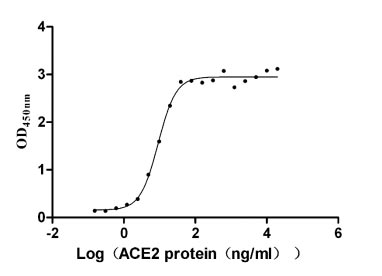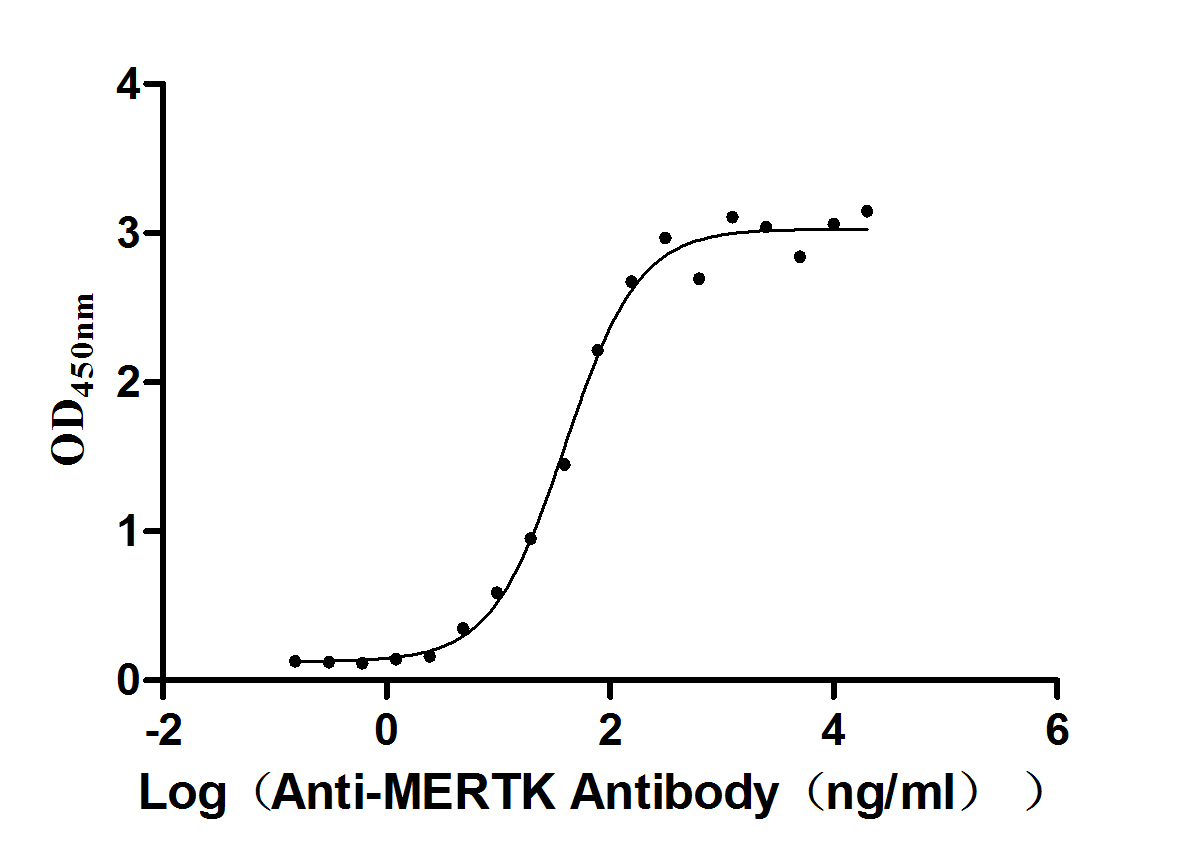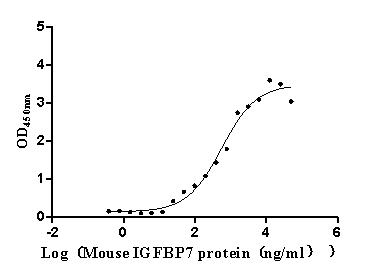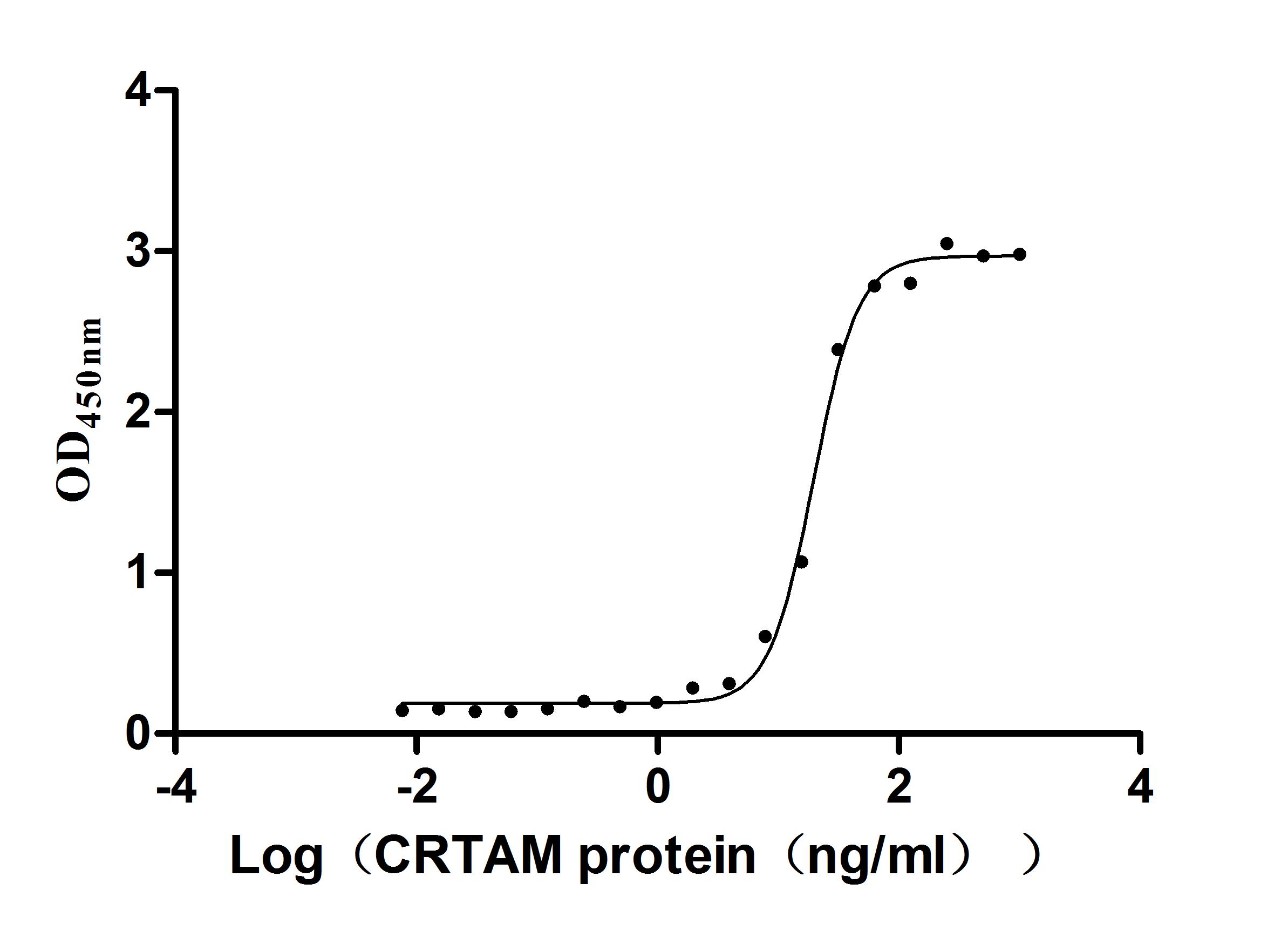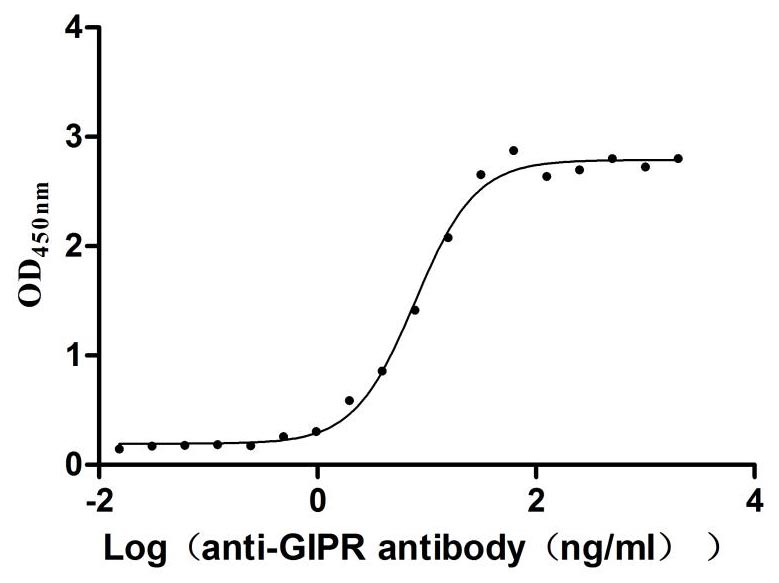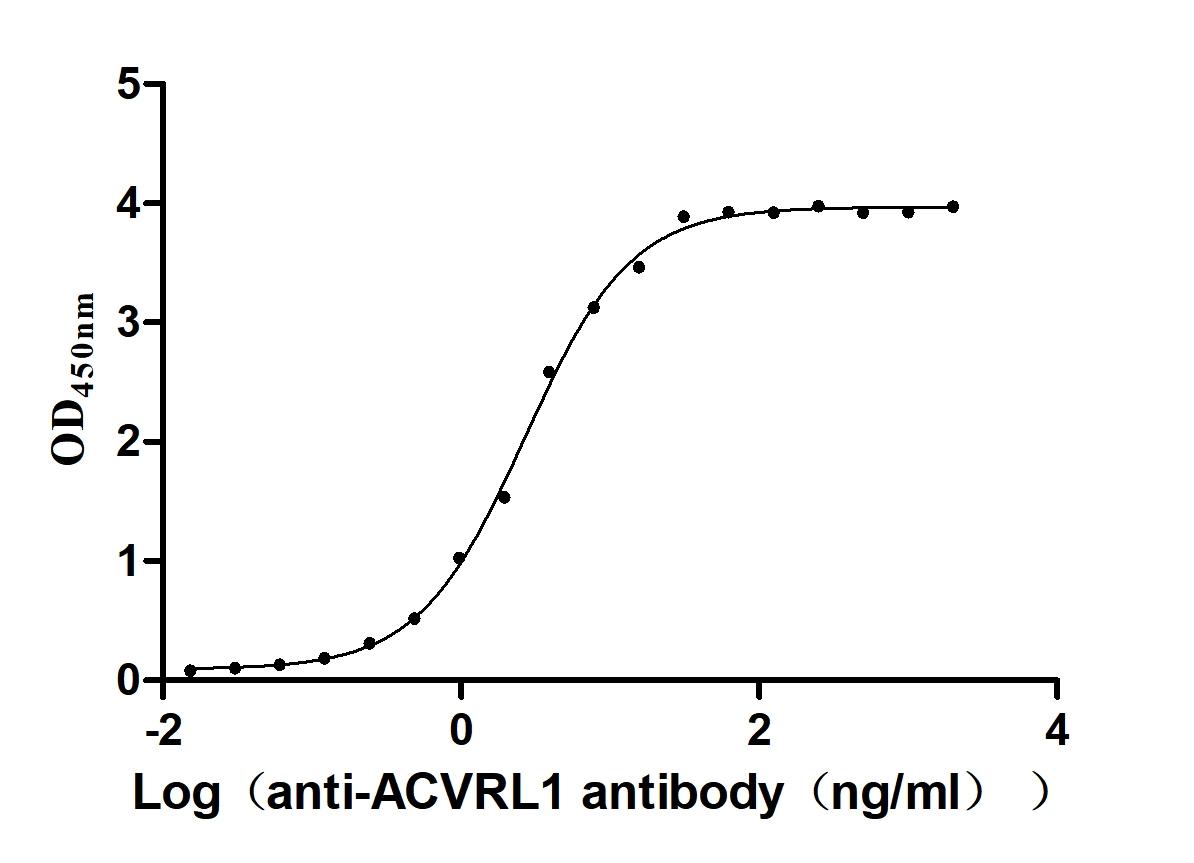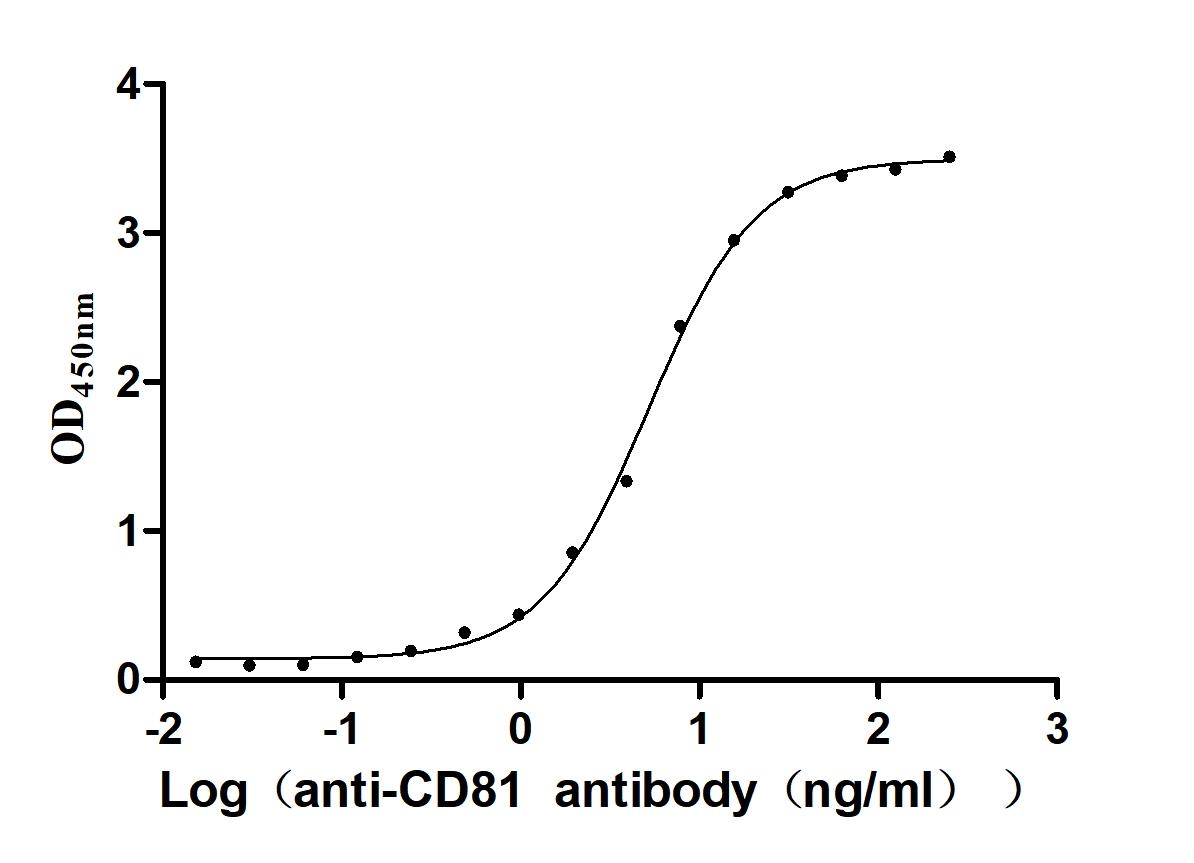Recombinant Mouse DNA-binding protein inhibitor ID-3 (Id3)
-
中文名稱:小鼠Id3重組蛋白
-
貨號:CSB-YP010969MO
-
規(guī)格:
-
來源:Yeast
-
其他:
-
中文名稱:小鼠Id3重組蛋白
-
貨號:CSB-EP010969MO
-
規(guī)格:
-
來源:E.coli
-
其他:
-
中文名稱:小鼠Id3重組蛋白
-
貨號:CSB-EP010969MO-B
-
規(guī)格:
-
來源:E.coli
-
共軛:Avi-tag Biotinylated
E. coli biotin ligase (BirA) is highly specific in covalently attaching biotin to the 15 amino acid AviTag peptide. This recombinant protein was biotinylated in vivo by AviTag-BirA technology, which method is BriA catalyzes amide linkage between the biotin and the specific lysine of the AviTag.
-
其他:
-
中文名稱:小鼠Id3重組蛋白
-
貨號:CSB-BP010969MO
-
規(guī)格:
-
來源:Baculovirus
-
其他:
-
中文名稱:小鼠Id3重組蛋白
-
貨號:CSB-MP010969MO
-
規(guī)格:
-
來源:Mammalian cell
-
其他:
產(chǎn)品詳情
-
純度:>85% (SDS-PAGE)
-
基因名:
-
Uniprot No.:
-
別名:Id3; Hlh462; Id-3; Idb3; DNA-binding protein inhibitor ID-3; ID-like protein inhibitor HLH 462; Inhibitor of DNA binding 3; Inhibitor of differentiation 3
-
種屬:Mus musculus (Mouse)
-
蛋白長度:Full length protein
-
表達區(qū)域:1-119
-
氨基酸序列MKALSPVRGC YEAVCCLSER SLAIARGRGK SPSTEEPLSL LDDMNHCYSR LRELVPGVPR GTQLSQVEIL QRVIDYILDL QVVLAEPAPG PPDGPHLPIQ TAELTPELVI SKDKRSFCH
-
蛋白標簽:Tag?type?will?be?determined?during?the?manufacturing?process.
The tag type will be determined during production process. If you have specified tag type, please tell us and we will develop the specified tag preferentially. -
產(chǎn)品提供形式:Lyophilized powder
Note: We will preferentially ship the format that we have in stock, however, if you have any special requirement for the format, please remark your requirement when placing the order, we will prepare according to your demand. -
復溶:We recommend that this vial be briefly centrifuged prior to opening to bring the contents to the bottom. Please reconstitute protein in deionized sterile water to a concentration of 0.1-1.0 mg/mL.We recommend to add 5-50% of glycerol (final concentration) and aliquot for long-term storage at -20℃/-80℃. Our default final concentration of glycerol is 50%. Customers could use it as reference.
-
儲存條件:Store at -20°C/-80°C upon receipt, aliquoting is necessary for mutiple use. Avoid repeated freeze-thaw cycles.
-
保質(zhì)期:The shelf life is related to many factors, storage state, buffer ingredients, storage temperature and the stability of the protein itself.
Generally, the shelf life of liquid form is 6 months at -20°C/-80°C. The shelf life of lyophilized form is 12 months at -20°C/-80°C. -
貨期:Delivery time may differ from different purchasing way or location, please kindly consult your local distributors for specific delivery time.Note: All of our proteins are default shipped with normal blue ice packs, if you request to ship with dry ice, please communicate with us in advance and extra fees will be charged.
-
注意事項:Repeated freezing and thawing is not recommended. Store working aliquots at 4°C for up to one week.
-
Datasheet :Please contact us to get it.
靶點詳情
-
功能:Transcriptional regulator (lacking a basic DNA binding domain) which negatively regulates the basic helix-loop-helix (bHLH) transcription factors by forming heterodimers and inhibiting their DNA binding and transcriptional activity. Implicated in regulating a variety of cellular processes, including cellular growth, senescence, differentiation, apoptosis, angiogenesis, and neoplastic transformation. Involved in myogenesis by inhibiting skeletal muscle and cardiac myocyte differentiation and promoting muscle precursor cells proliferation. Inhibits the binding of E2A-containing protein complexes to muscle creatine kinase E-box enhancer. Regulates the circadian clock by repressing the transcriptional activator activity of the CLOCK-ARNTL/BMAL1 heterodimer.
-
基因功能參考文獻:
- The present results suggested that ID3 may offer protection against Antiglomerular basement membrane glomerulonephritis in mice. PMID: 28990057
- The present study provides additional support for roles for ID3 in the etiology of depression following early adversity. PMID: 27506655
- down-regulation of Id3 in B cells is essential for releasing E2A and E2-2, which in a redundant manner are required for antigen-induced B cell differentiation. PMID: 27217539
- Results found that Id3 expression is high in follicular B lineage cells but declines in germinal center (GC) cells. However, during the GC reaction, Id3 levels decline to activate the expression of genes encoding signaling components that mediate B cell receptor- and or cytokine receptor-mediated signaling to promote the differentiation of GC B cells. PMID: 27457619
- These results identify Id3 as the BMP-2-induced transcriptional regulator, promoting adult NSPC differentiation into astrocytes upon CNS injury PMID: 26438726
- Inflammation-induced S100A8 promotes colorectal tumorigenesis by acting upstream to activate the Akt1-Smad5-Id3 axis. PMID: 26135667
- Data show that enforced expression of inhibitor of differentiation protein Id3 specifically increased the persistence of Cd244 protein 2B4(+) virus-specific CD8(+) T cells. PMID: 26232435
- ID2/3 are crucial regulators of the adaptive antioxidant-mitochondrial response that promotes beta cell survival during oxidative stress through a novel link to the NFE2L2-small MAF pathway. PMID: 25636209
- Enhanced IL-13 production by T cells can play a causative role in the exocrinopathy observed in Id3 knockout mice. PMID: 25010390
- Tob1 and Tob2 inhibit the cell cycle via degradation of Id3 mRNA, which is a set of directly targeted genes of BMP4 signaling in embryonic stem cells. PMID: 25951976
- A functional ID3 influences susceptibility to kidney disease and prevents glomerular injury. PMID: 24854879
- Id2 is the major modifier of Id3 in limiting Vgamma1.1(+)Vdelta6.3(+) T cell expansion. Id2 and Id3 collaboratively control survival and expansion of the gammadelta lineage through modulating a proper threshold of E proteins. PMID: 24379125
- ID2 & ID3 redundantly promoted iNKT cell lineage specification involving PLZF induction. ID3 is critical for development of TBET-dependent NKT1 cells. ID3 limited iNKT cell numbers by enforcing the postselection checkpoint in conventional thymocytes. PMID: 24244015
- Id3 is a key regulator of natural helper cell IL-5 production and B-1a B cell homeostasis. PMID: 24115031
- a novel pathway in which SREBP-1/ANKRD2/ID3 activation inhibits myoblast differentiation, and we propose that this pathway acts as a critical determinant of the skeletal muscle developmental program. PMID: 23824195
- N-terminal cysteine residues of Id3 interact with arsenite and are essential for the metalloid-induced nuclear export. PMID: 23523789
- Id3 is an atheroprotective transcription regulator with targets in both B cells and vessel wall cells leading to reduced macrophage accumulation and reduced atherosclerosis formation. PMID: 23042815
- loss of function of Id3 in the sire results in impaired male fertility. Id3 might coordinate gene expression programs in the male reproductive system associated with the generation of healthy offspring. PMID: 22016354
- These data suggest a model whereby E protein transcription factor activity favors rapid memory-precursor T-cell formation while their negative regulators, Id2 and Id3, are both required for robust effector CD8(+) T-cell response during infection. PMID: 22585759
- Id3 represses p57(Kip2) expression in human beta-cells. PMID: 21964314
- Deficiency of a transcriptional regulator, inhibitor of differentiation 3, induces glomerulonephritis in apolipoprotein E-deficient mice PMID: 21801865
- B-cell aortic homing and atheroprotection depend on Id3. PMID: 22034493
- Id3 is an important regulator of high-fat diet-induced visceral adipose VEGFA expression, microvascular blood volume, and depot expansion. PMID: 22075252
- Thymi in Id3-deficient mice had aberrant development of effector-memory cells, higher expression of the chemokine receptor CXCR5 and the transcriptional repressor Bcl-6 and, unexpectedly, T cell-B cell conjugates and B cell follicles. PMID: 21857655
- Although ID3 deficiency (Id3(-/-) mice) had no noticeable impact on epididymal histology, the targeted mutation adversely affected sperm motility parameters. PMID: 21148110
- controls the differentiation of regulatory T cells and Th17 cells PMID: 21131965
- Results describe a general mechanism whereby BMP2 regulates Id3/ID3 transcription in different cell types and in different species. PMID: 21056086
- Modeling Sjogren's syndrome with Id3 conditional knockout mice. PMID: 20932862
- PC3/Tis21 binds to the promoter of Id3 and represses its activity. By this mechanism, the upregulation of Id3 in the hippocampus caused by PC3/Tis21 ablation prevents terminal differentiation of hippocampal neurons. PMID: 20020054
- X-ray irradiation increased markedly the ID3 protein level in epidermis of hairless mouse skin. PMID: 21030215
- Id3 null mutation causes the development of T-cell lymphoma. PMID: 20852128
- hearts from Tie2Cre+Id1-/-Id3+/- and Id1F/+Id3-/- mice, which contain higher Id levels than those from Id conditional knockout mice, did not reveal severe changes in gene expression profiles PMID: 20937270
- Data indicate a role for Id3 in repressing the response of "innate" gammadelta T cells to SAP-mediated expansion or survival. PMID: 20174563
- These data suggest a model in which BMP signaling regulates Id1 and Id3 in muscle satellite cells, which directs their proper proliferation before terminal myogenic differentiation after skeletal muscle injury in postnatal animals. PMID: 20181926
- Results provide novel evidence that Id3 is an atheroprotective factor and link a common SNP in the human ID3 gene to loss of Id3 function and increased carotid intima-media thickness. PMID: 20185798
- Analysis of mRNA & protein throughout the aorta reveals a much higher abundance of Id3 in the ascending aorta compared to all other regions. Id3 deficiency inhibits Ang II-induced SMC hyperplasia of the ascending aorta. PMID: 20019328
- Expression of inhibitor of differentiation gene 3 (Id3) controls the frequency of promyelocytic leukemia zinc finger (PLZF)-expressing gamma delta T cells. PMID: 20038637
- The Id3 and NP1 genes become transcriptionally active after MyoD induction in undifferentiated myoblasts. This is a stable, heritable event that does not need continued MyoD activity & is not subject to negative regulation by activated H-Ras G12V. PMID: 12167713
- E2A/HEB and Id3 proteins control the sensitivity to glucocorticoid-induced apoptosis in thymocytes by regulating the SRG3 expression PMID: 15016815
- Review. Id3 is required for proper B cell functions and acts by controlling the cell cycle. PMID: 15184986
- Phosphorylation of the helix-loop-helix factor Id3 in VSMCs occurs in vitro and in vivo and provides a regulatory switch controlling Id3-induced regulation of p21Cip1 and VSMC growth. PMID: 15321928
- critical connection between Id3-mediated T cell development and autoimmune diseases PMID: 15485632
- The differential expression profiles of Id3 provide the groundwork for the elucidation of its possible role in retinal development. PMID: 15858404
- growth-promoting effects of 12/15-LO are at least partially mediated through induction of Id3 transcription PMID: 16037566
- Id3 induces apoptosis of both primary and transformed B lymphocyte progenitors through a caspase-2-dependent mechanism that does not require p53 and is not inhibited by bcl-2. PMID: 16177095
- Id3 may be a potential target for Sp2 and raise the possibility that acute activation and the chronic and maintained expression of Id3 gene might be regulated by different mechanisms. PMID: 16216350
- new facet of negative regulation, mediated by Id proteins, as well as the mechanism whereby TRANCE signaling overcomes it, allows osteoclastogenesis to proceed. PMID: 16322470
- Id3 is expressed within the cochlear duct in a pattern that is consistent with a role in regulation of hair cell development. PMID: 16407553
- Id3 regulates helix-loop-helix factor sterol regulatory element binding protein (SREBP-)1c activity indirectly by interacting with E47, thereby preventing E47 binding to the adiponectin promoter and inhibiting adiponectin expression. PMID: 18669923
- Id3 plays a critical role in limiting CD4 and CD8 double-negative DN3 cells from progressing to the gamma delta lineage after nonproductive T cell receptor beta rearrangement. PMID: 19380777
顯示更多
收起更多
-
亞細胞定位:Nucleus. Cytoplasm. Note=Nuclear in proliferating cells, translocates to cytosol during cell differentiation.
-
組織特異性:Expressed by myoblasts (at protein level).
-
數(shù)據(jù)庫鏈接:
Most popular with customers
-
Recombinant Severe acute respiratory syndrome coronavirus Spike glycoprotein (S), partial (Active)
Express system: Mammalian cell
Species: Human SARS coronavirus (SARS-CoV) (Severe acute respiratory syndrome coronavirus)
-
Recombinant Human Tyrosine-protein kinase Mer (MERTK), partial (Active)
Express system: Mammalian cell
Species: Homo sapiens (Human)
-
Recombinant Mouse Complement component C1q receptor (Cd93), partial (Active)
Express system: Mammalian cell
Species: Mus musculus (Mouse)
-
Recombinant Human Early activation antigen CD69 (CD69), partial (Active)
Express system: Mammalian cell
Species: Homo sapiens (Human)
-
Recombinant Human Cell adhesion molecule 1 (CADM1), partial (Active)
Express system: Mammalian cell
Species: Homo sapiens (Human)
-
Recombinant Rat Gastric inhibitory polypeptide receptor (Gipr), partial (Active)
Express system: Mammalian cell
Species: Rattus norvegicus (Rat)
-
Recombinant Human Serine/threonine-protein kinase receptor R3 (ACVRL1), partial (Active)
Express system: Baculovirus
Species: Homo sapiens (Human)
-
Recombinant Human CD81 antigen (CD81), partial (Active)
Express system: Mammalian cell
Species: Homo sapiens (Human)


